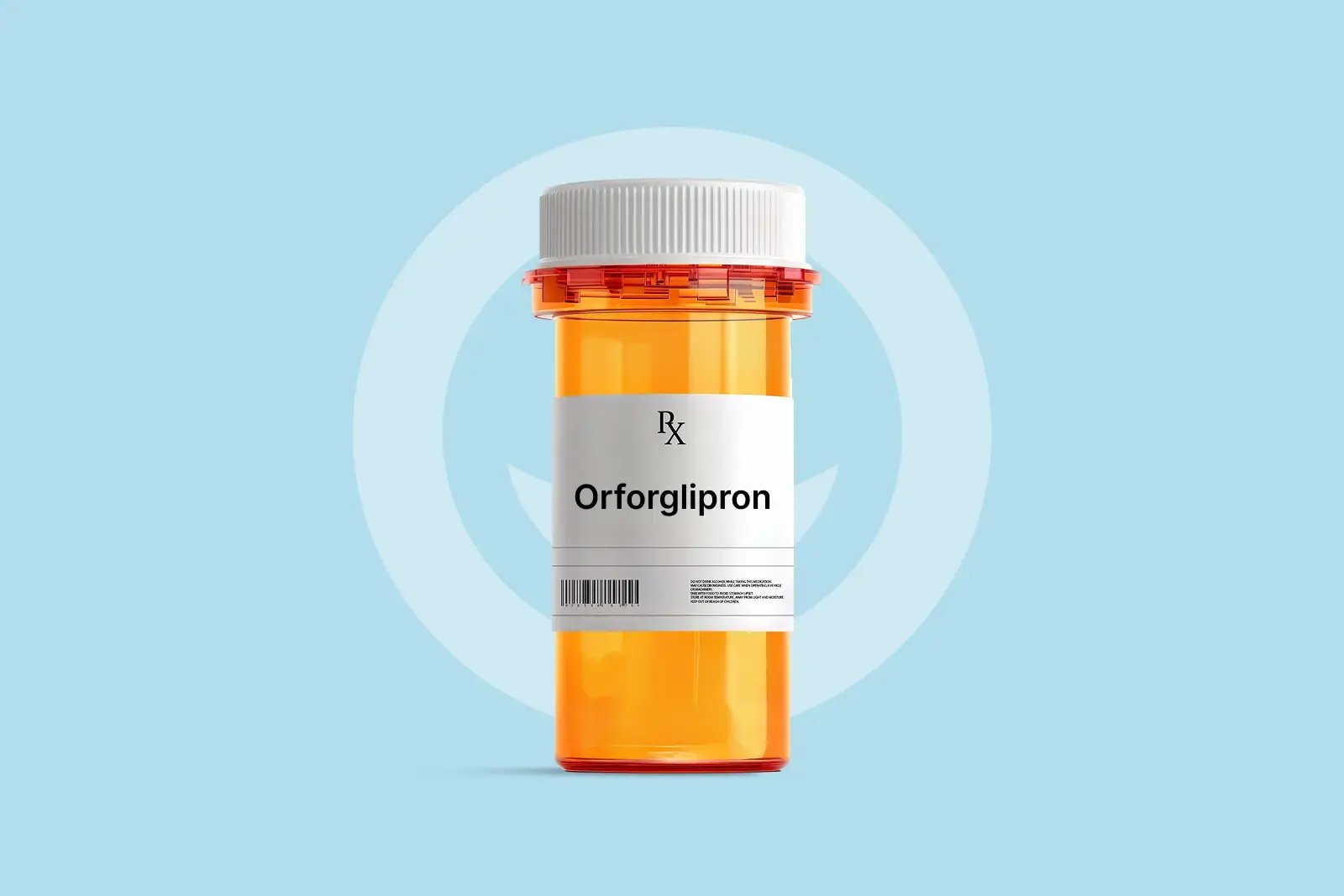Lilly's Oral Diabetes Drug Delivers Knockout Punch to Novo Nordisk's Market Dominance
Revolutionary pill outperforms rival by 73% in weight loss while reshaping $150 billion diabetes treatment landscape
INDIANAPOLIS — Eli Lilly's experimental diabetes pill orforglipron has delivered a decisive victory over Novo Nordisk's established oral medication in the first head-to-head comparison of its kind, potentially disrupting the Danish company's grip on the rapidly expanding diabetes and obesity treatment market.
The 52-week ACHIEVE-3 trial, involving 1,698 patients across six countries, showed Lilly's once-daily tablet achieved superior blood sugar control and weight loss compared to Novo's Rybelsus (oral semaglutide). At the highest doses, orforglipron reduced hemoglobin A1C levels by 2.2% versus 1.4% for Rybelsus, while delivering 73.6% greater weight loss—19.7 pounds compared to 11.0 pounds.
The results, announced today, represent more than clinical superiority. They signal a potential seismic shift in a market projected to exceed $150 billion by the early 2030s, where convenience and manufacturing scalability could prove as valuable as therapeutic efficacy.

Manufacturing Muscle Flexes Against Supply Chain Strain
Unlike peptide-based injections that require complex cold-chain logistics and specialized manufacturing, orforglipron's small-molecule structure enables conventional tablet production at industrial scale. This advantage becomes critical as global demand for GLP-1 treatments continues to outstrip supply, creating persistent shortages that have limited patient access and constrained revenue growth across the sector.
The manufacturing differential extends beyond production capacity. While Rybelsus requires patients to take it on an empty stomach with minimal water and wait 30 minutes before eating—restrictions that complicate real-world adherence—orforglipron can be taken anytime without food or water limitations.
Clinical data supports this practical advantage. Treatment discontinuation rates due to adverse events were 8.7% and 9.7% for the two orforglipron doses compared to 4.5% and 4.9% for Rybelsus, though investigators noted the study wasn't powered to directly compare safety profiles between the medications.
Near-Normal Blood Sugar Achievement Triples Success Rate
Beyond headline efficacy numbers, orforglipron demonstrated remarkable success in helping patients achieve near-normal blood sugar levels. Among participants taking the highest orforglipron dose, 37.1% reached hemoglobin A1C levels below 5.7%—a threshold considered pre-diabetic rather than diabetic—compared to just 12.5% on the highest Rybelsus dose.
This threefold improvement in achieving glycemic normalization carries profound implications for long-term cardiovascular and kidney health outcomes, potentially influencing future treatment guidelines and insurance coverage decisions.
The medication also showed meaningful improvements across cardiovascular risk factors, including reductions in non-HDL cholesterol, systolic blood pressure, and triglycerides, though detailed cardiovascular outcome studies remain pending.
Competitive Storm Clouds Gather on the Horizon
Despite orforglipron's impressive performance against current Rybelsus formulations, Novo Nordisk isn't ceding territory without a fight. The company's higher-dose oral semaglutide versions—25mg and 50mg—have demonstrated stronger efficacy than the 14mg dose used in the ACHIEVE-3 comparison, with the 25mg formulation under FDA review for obesity treatment with an anticipated decision in the fourth quarter.
In the OASIS-1 trial, Novo's 50mg oral semaglutide produced approximately 15% mean weight loss, potentially exceeding orforglipron's performance based on separate obesity program data showing roughly 12% weight reduction at 72 weeks.
The competitive landscape intensified further with Novo's recent cardiovascular outcomes victory. The company's SOUL trial demonstrated a 14% reduction in major adverse cardiovascular events with Rybelsus, earning European Union label expansion for cardiovascular risk reduction—a clinical milestone orforglipron has yet to achieve.
Some analysts suggest this cardiovascular benefit could provide Novo significant leverage with payers and prescribers despite orforglipron's metabolic advantages. Insurance companies increasingly favor medications with proven cardiovascular protection, particularly given the substantial cost burden of GLP-1 treatments.
Primary Care Prescription Patterns Poised for Disruption
The broader implications extend into physician prescribing patterns, particularly in primary care settings where diabetes management increasingly begins. Orforglipron's simplified dosing regimen and tablet formulation could accelerate adoption among family physicians who may feel less comfortable prescribing injectable medications or managing complex administration instructions.
Industry observers note that oral GLP-1 medications represent a critical access expansion opportunity, particularly in employer health plans where injection-averse patients or those concerned about workplace administration have avoided treatment despite clinical need.
Current pricing benchmarks suggest oral GLP-1 medications command approximately $998 monthly wholesale costs, though net pricing after rebates and discounts varies significantly across payers. Lilly's strategic approach may involve competitive pricing to drive rapid market penetration, leveraging manufacturing cost advantages to undercut Novo's established position.
Investment Implications Signal Portfolio Rebalancing
The ACHIEVE-3 results carry immediate implications for investment positioning within the diabetes and obesity treatment sector. Lilly's demonstrated superiority over Novo's current oral offering, combined with manufacturing scalability advantages, suggests potential market share redistribution as the oral GLP-1 segment expands.
Analysts project orforglipron could capture significant commercial opportunity by targeting the post-metformin treatment position in type 2 diabetes, competing directly with SGLT2 inhibitors and existing oral semaglutide prescriptions. The medication's planned regulatory submissions in 2026 for diabetes treatment, with parallel obesity program readouts, could establish Lilly as the dominant oral GLP-1 provider.
However, investment considerations must account for execution risks, including real-world tolerability outcomes, payer coverage negotiations, and Novo's competitive response through higher-dose formulations and cardiovascular benefit messaging.
The absence of cardiovascular outcomes data for orforglipron represents a near-term competitive disadvantage that could influence prescribing patterns and reimbursement decisions, particularly among specialist endocrinologists who prioritize proven cardiovascular protection.
Portfolio managers may consider Lilly's manufacturing and convenience advantages as sustainable competitive moats in an increasingly commoditized therapeutic class, while monitoring Novo's ability to defend market position through clinical differentiation and outcome-based value propositions.
Market dynamics suggest continued growth across the entire GLP-1 class, with oral formulations expanding accessible patient populations beyond those currently served by injectable options, potentially creating complementary rather than purely substitutional demand patterns that benefit both companies' long-term prospects.
House Investment Thesis
| Category | Summary | Key Data & Context |
|---|---|---|
| Bottom Line | Clinically real and commercially relevant win for orforglipron vs. oral sema 7/14mg. Trial quality is "good, not perfect" (open-label). | A1C: -2.2% (36mg) vs. -1.4% (Rybelsus). Weight: -9.2% vs. -5.3%. Superiority is clear and meaningful. |
| Efficacy Signals | Strong. Superior A1C reduction and weight loss at both low and high dose pairs. Improved cardiometabolic markers. | A1C: -2.2% (36mg), -1.9% (12mg) vs. -1.4% (14mg), -1.1% (7mg). Weight: -9.2% (36mg), -6.7% (12mg) vs. -5.3% (14mg), -3.7% (7mg). |
| Safety/Tolerability | GI AEs dominate; discontinuations a bit higher with orforglipron. No hepatic signal (de-risks vs. Pfizer's danuglipron). | Typical for the class and titration-dependent. Full safety tables are pending. |
| Dosing Advantage | Major advantage for orforglipron. No fasting or water restrictions vs. Rybelsus' complex fasting/30-min wait regimen. | Dosing simplicity should improve real-world adherence and persistence for orforglipron. |
| Competitive Landscape | Outclasses approved Rybelsus 7/14mg. Key threat is Novo's higher-dose oral sema (25/50mg). Lacks CVOT data (Rybelsus has SOUL CVOT). | Oral Sema 50mg (OASIS-1): ~15% weight loss. FDA reviewing 25mg for obesity (Q4'25). PIONEER PLUS showed 25/50mg beat 14mg in T2D. |
| Obesity Read-Through | Good, but below injectables & likely oral sema 50mg. Pivotal ATTAIN data show ~12% weight loss at 72 wks. | Convenience and scalability can still make it a high-volume product for the mass market. |
| Market Opportunity | Oral GLP-1s are key to unlocking mass-market, primary-care adoption in the >$150B anti-obesity/diabetes market. | Pricing: Likely anchored to Rybelsus (~$998/month). Lilly may target slightly lower net pricing to catalyze coverage. |
| Key Risks | 1. Novo's high-dose oral sema label expansions. 2. CVOT data gap vs. Rybelsus. 3. GI tolerability & real-world persistence. 4. Payer pushback & step-edits. 5. Flood of new competitors (Roche, Structure, MariTide). | |
| Scaling Advantages | 1. Manufacturability: Small-molecule tablets are simpler to mass-produce than injectables. 2. Dosing convenience improves adherence. 3. Breadth: Programs in OSA & hypertension for pull-through. | |
| What to Watch Next | • Full ACHIEVE-3 data (discontinuations, subgroups). • ACHIEVE-2 topline (vs. dapagliflozin). • ATTAIN obesity granular data. • Regulatory: T2D filing in 2026, obesity filing ~2025/26. • FDA decision on oral Wegovy 25mg (Q4'25). | |
| Investor Take | Near-term T2D share gain likely. In obesity, commercially viable at scale due to convenience, even if efficacy is not best-in-class. Valuation hinges on CV strategy, payer coverage, and Novo's high-dose real-world performance. |
Past performance does not guarantee future results. Investors should consult qualified financial advisors before making investment decisions based on clinical trial data or market projections.
